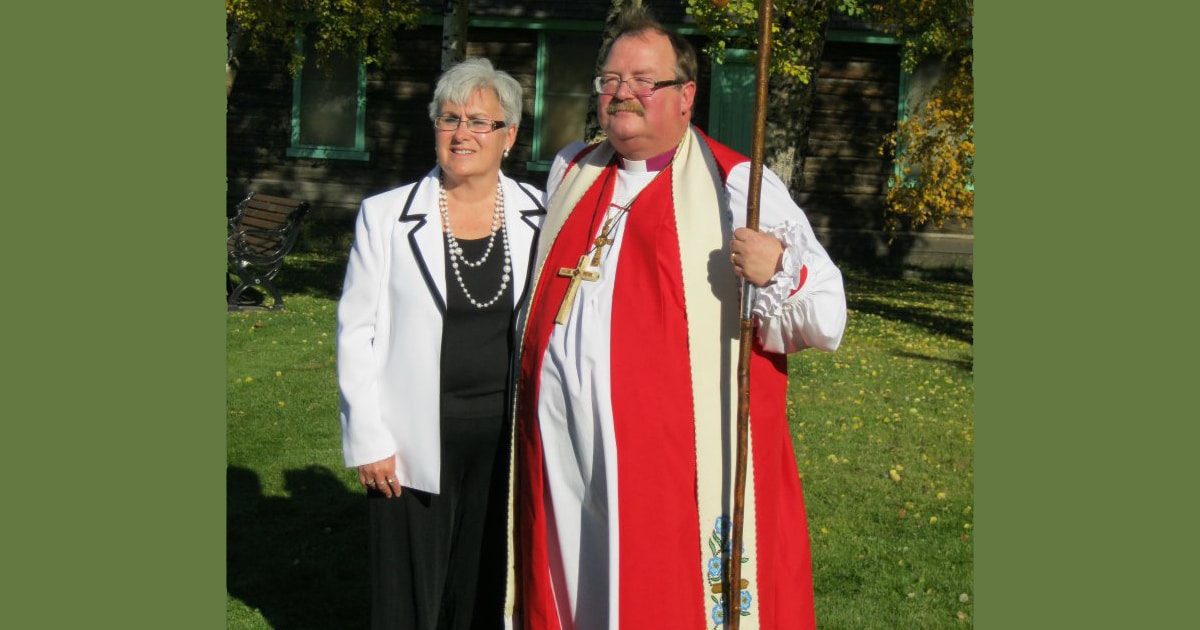Complementing the mitre he wears as bishop of the Anglican diocese of Yukon, Bishop Larry Robertson is about to try on an old hat again—that of parish priest.
In an experiment designed to make the most of diocesan resources, Bishop Robertson and his wife plan to move this summer into a parish—one yet to be determined—that currently lacks any stipendiary clergy. There the bishop will serve as the parish priest for an intended period of three years, taking on duties related to local ministry in addition to his role as diocesan bishop.
“I’m excited about it,” Bishop Robertson said.
“On a personal basis, it’s getting back into [parish] ministry. One of the things I think that as bishops we often lose touch of, is what’s happening in a parish. So in that sense, I’m really looking forward to it … I really think it’s a positive move in spreading the ministry and serving the people of the Yukon.”
The idea of moving the bishop into a parish emerged out of discussions on how the diocese could best serve its members, following years in which diminishing financial support had led to an ever-smaller pool of clergy.
The diocese of Yukon currently has three paid clergy, with volunteers comprising the bulk of those engaged in ministry. The challenges of ministering to the population with such a small staff prompted discussions in recent years among the diocesan leadership about how to best maximize their resources.
Both Bishop Robertson and his predecessor, Bishop Terry Buckle, had raised the idea of the bishop moving into a parish. At the last diocesan synod, members formally asked Bishop Robertson if he would be willing to make the move.
“You’ll have to choose a parish,” he replied, further adding some key qualifications. Other than a house to stay in, these included being able to travel out of the parish and having local lay leadership available to fill in when the bishop is gone.
A committee of people from across the diocese formed to choose a suitable parish. The Rev. Sarah Usher, diocesan administrative officer, has visited major churches in five parishes seen as potential contenders. Each parish in turn has provided their own views to the committee, which intends to make its decision at the May diocesan executive meeting.
Asked how he would balance his duties as bishop with the tasks of a parish priest, Bishop Robertson responded with a hearty laugh: “Very carefully!” He highlighted the necessity of strong planning, while acknowledging that he would now have to be in the parish for major festivals such as Easter and Christmas rather than visiting other parts of the diocese.
“There’ll be a lot of communication with the parish, and we’re going to have to keep revising things and seeing how things go,” the bishop said, noting that improved communication technology such as smartphones would make organization and providing updates much easier.
For Usher, the main benchmarks of success will be whether the diocese is able to minister to more people and if the bishop can raise people within the congregation to more lay ministry.
“He’ll be in the community and being able to talk with others all the time,” Usher said. “But the success for him will be to raise people up to do ministry when he’s not around.”
While anxious to hear about which parish he will be moving to and adopting a wait-and-see approach regarding the eventual success of the plan, Bishop Robertson expressed his excitement about the move.
By providing another experienced priest to a parish, he hopes to ease the workload of full-time clergy who are currently expected to take part in training and working with volunteers, both locally trained and those in the ministry of presence program.
“More than anything, that’s what we’re concerned about: how do we serve our people?” the bishop said.
“Is it going to be the same?” he added. “No, it will be different. There won’t be quite as many parish visits from the bishop.
“But in the long run, we are hoping that it enables more people to receive the services of the church and of the priests … more people able to be trained, [and] more people able to grow in Christ and to receive the healing and the ministry of the church.”
